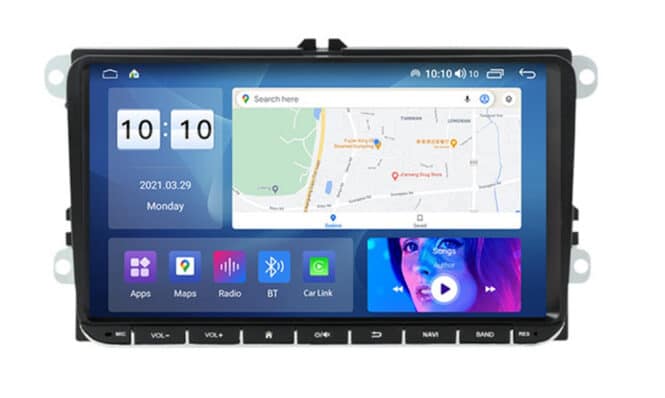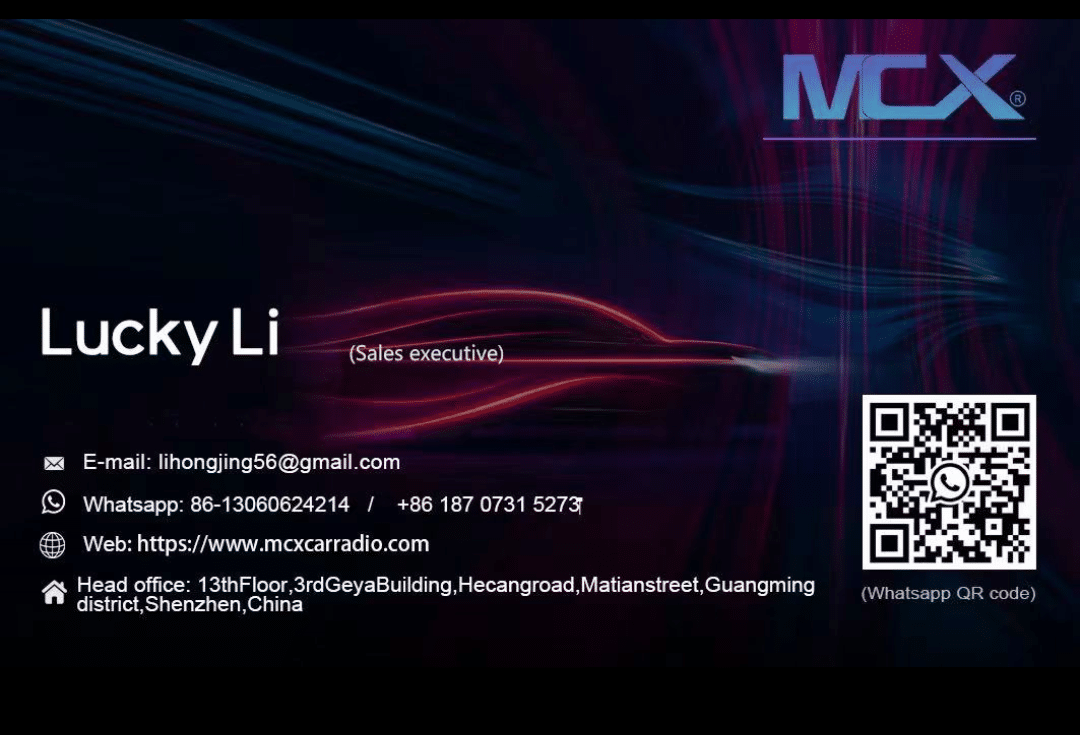
Android Car Radio Tablets Are Big
Android all-in-one touchscreen car radios are big. The global car audio market (including advanced Android units) is estimated at $13–15 billion for 2025, with expected growth to $18+ billion by 2032. As part of our APAC group we want to highlight Car Radios. Not the usual Android tablet technology we cover but it is sizable market driving Android tablets. See our https://kioskasia.org website for more options from China. In several ways Android card radio tablets are becoming a voice order kiosk for consumers.
Android car radios are modern car head units powered by the Android operating system, offering features like navigation, Bluetooth, Wi-Fi connectivity, and support for Android Auto and Apple CarPlay. They are designed to replace the stock radios and also to add them into older and newer cars. They are often Voice Controlled (Google Assistant or Siri for example)
Android Car Radios Overview
-
Android car radios function as in-car tablets, providing access to navigation, streaming apps, advanced audio controls, and integration with smartphones through Android Auto.android+1
-
Modern units allow customization through themes, equalizer settings, and often support both Android and Apple systems, including wireless CarPlay.youtubereddit
-
Key features to look for: minimum 4GB RAM, 32GB storage, fast processor, external microphone for better call quality, GPS, high-quality display, and reverse camera integration.youtube
Buying Guide and Considerations
-
Prioritize reliable brands and scrutinize technical specs to avoid low-quality or fake products.youtube
-
Installation ease varies: some models offer pre-wired harnesses, but may require minor dashboard modifications.reddit
-
Common issues include mediocre sound quality, limited themes, basic radio apps, and possible battery drain if the unit isn’t wired correctly.reddityoutube
Recommended Contact in China
- We are familiar with Lucky Li with MCXCarradio. They participate in our APAC group for over a year. Honest, detailed and sincere.
- Whatsapp – 86-13060624214
- [email protected]
Our Recommendations
- Fake specs are a problem. What’s advertised is not always what you get.
- How long to boot up? 15 secs is around max allowed
- Overheating — heat sinks and fans are useful especially in hot weather
- How bright? Rated for a convertible? QLEDs go up to 1000 nits
- External Bluetooth connections are good for phone calls
- Battery drain issues — unit needs to shut ALL THE WAY DOWN
- 4G RAM, 32 GB SRAM, and Android 10+
- The smaller the better but it depends on your car and the mounting plastic trim available.
- Make sure the trim colors match too
- Some units include dedicated voice command apps that let users operate the radio functions—like turning the screen on/off, switching sources, or choosing presets—just by speaking.
Car Radio Hardware
Typical Android car radio units use hardware similar to mid-range smartphones, but with features specialized for in-car use. Most modern units run Android versions from 9 up to 13, feature 4-8GB of RAM, and offer at least 32GB of internal storage, with quad-core or octa-core processors for smooth performance.
Key Hardware Specifications
- Processor: Most units offer quad-core or octa-core CPUs; dual-core models tend to lag and are generally not recommended.
- Memory (RAM): 4GB is considered the minimum for responsive operation; higher-end models feature up to 8GB for multitasking.
- Internal Storage (ROM): 32GB is the minimum recommended to avoid performance issues; top models feature 64GB or more.
- Display: Head units range from 7” to 10.1” screens, often IPS or QLED with good touch response and visibility.
Feature Requirements
- Operating System: Android 9 (Pie) or newer versions like 10, 11, or 12 provide the best balance of stability and app compatibility.
- DSP: Some units include Digital Signal Processor for enhanced audio quality, which is a preferred feature for audiophiles.
- Connectivity: Expect Bluetooth, Wi-Fi, GPS, and USB/Type-C ports; many offer wireless Android Auto and CarPlay.
Minimum Specs for Smooth Use
RAM: 4GB or higher is strongly recommended.
Storage: 32GB minimum, with 64GB preferred for app install flexibility.
Processor: Quad-core or octa-core preferred for avoiding lag.
Android Version: At least Android 9 or 10; newer versions offer improved compatibility and security.
Units with less than 2GB RAM or low-end processors frequently experience crashes and slowdowns, so prioritize these specs even for budget purchases. Reading actual user reviews and verifying listed specs (since some sellers exaggerate) is highly recommended
The best Android car radio screens typically reach brightness levels between 600 and 1000 nits, which is bright enough to remain visible under direct sunlight for most driving conditions. IPS screens provide excellent daytime readability and wide viewing angles, while QLED screens offer even greater brightness and color vibrancy, though IPS often outperforms QLED in very sunny environments due to lower reflectance.youtubereddit+1
Screen Technology Comparisons
-
IPS screens: Known for wide viewing angles and strong sunlight performance, with typical brightness around 600-800 nits.xyingly
-
QLED screens: Offer vivid colors and peak brightness up to 1000 nits; ideal for users wanting stunning visuals, although sunlight glare may impact viewability compared to IPS panels.reddit+1
Real-World Performance
-
Quality units display full brightness with no viewing issues in convertibles or vehicles with non-tinted windows, giving clear visuals even in direct sun.reddityoutube
-
Both screen types usually include brightness adjustment features and night mode options to reduce glare during nighttime driving.youtube+1
To ensure a screen is bright enough for any environment, look for specifications listing a minimum of 600 nits and confirm user reviews for outdoor or convertible use.

